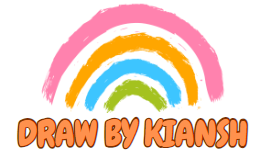I’ll help you find the best markers for your art! I’ll explain tips on choosing the right tip shape, blending, brands, costs, and the differences between water-based and alcohol-based markers. I’ll also share my top recommendations for the best markers.
I’ve published over 30 coloring books (selling 4 million copies) since 2014, so I’ve done a lot of illustrating and experimenting with markers. My collection has over 800 markers from more than a dozen brands! I’ll share everything that I’ve learned to help you find the best markers for you.
If you don’t have time to read everything, you can skip to “The Best Markers for Art and Illustration” or watch my video below.
Intro to Art Markers: A Beginner’s Guide
If you’re new to markers, check out my video where I explain all you need to know to choose the best markers for your art.
Subscribe to my channel to see more art videos! 😃
Quick Overview
Not too long ago, markers were mainly used by graphic designers and manga artists because they aren’t as fade-resistant as other media. But now, many artists love markers for their versatility and wide range of colors.
Markers are affordable, convenient, and don’t make a mess. They work well with other media and let you apply bold colors quickly and easily.
Different Marker Brands
Markers dry quickly and are easy to use, making them great for travel, plein-air studies, or urban sketching. Markers are perfect for doodling, sketching, and gesture-drawing. They can also blend smoothly, making them suitable for photorealism, abstraction, and everything in between!
Tip Shapes
Before we talk about different brands, let’s look at the different tip shapes, as this greatly affects how you color. Here’s a simple overview:
Brush Tip
- Brush pens are my favorite because they’re versatile. Use the point for thin strokes or flatten it to fill large areas. They can create variable-width strokes but are usually more expensive. Some brands offer replaceable tips.
Chisel Tip
- Chisel tips are common and useful. The wide side covers large areas, and the pointy side makes thinner strokes. They’re not as precise as brush or fine tips, but still good for general use.
Fine Tip
- Fine tips are like those on technical pens used by architects. Great for detailed work but not practical for large color areas.
Bullet Tip
- Bullet tips are found in many cheaper marker sets. They’re good general tips but not very versatile—fine details are tricky and filling large areas can be slow.
Double-Ended Markers
- Double-Double ended markers offer the best of both worlds. They have a central ink reservoir with different tips on either end, like a brush tip and chisel tip or a bullet tip.
Stroke Examples
You can achieve a variety of strokes with any marker tip. Each tip type has its strengths and weaknesses, so the best marker tip for you depends on your preference and the kind of art you want to create.
I often use the Copic marker brush tip to create entire artworks. The cool thing about markers is that they can be combined, so you don’t need to stick to just one type or brand.
Mix and match as you like. For instance, use a brush tip or chisel tip for large color areas, and then add details with a fine or bullet tip!
Water-Based Markers vs. Alcohol-Based Markers
The next big choice is whether you want water-based or alcohol-based markers. The dyes in markers are suspended in either water or alcohol, which affects cost, blend ability, and permanence.
Here’s a quick rundown of the differences:
Water-Based Markers
- Cheaper
- Fewer colors
- Usually disposable
- Poor fade resistance
- Dries less quickly
- No odor
- Widely available
- Can warp paper
- Can be re-activated with water, creating washes
Alcohol-Based Markers
- More expensive
- More colors
- Some are refillable
- Better fade resistance (but not lightfast)
- Dries quickly
- Can have an odor
- Found mostly in art supply stores
- Can bleed through paper
- Has transparency, so colors can be layered
Remember using Crayola markers as a kid? Those are water-based. They’re widely available in cheap sets for kids, made from lower-quality dyes. But water-based markers aren’t just for kids there are professional-grade ones too.
Artist-quality markers of both types (water-based and alcohol-based) usually have higher-quality dyes.
Water-Based vs. Alcohol-Based Markers: Which is Better?
If you’re moving up from Crayolas to artist-grade markers, it might be hard to choose between water-based and alcohol-based markers. I suggest trying both to see which you prefer. Both types are available in singles or small sets, so you can experiment without spending too much.
Water-Based Markers
- Availability: Found everywhere, often in kids’ sets but also in high-quality artist versions.
- Best For: Coloring books because they don’t bleed through paper as much.
- Downsides: Can warp or damage paper if you use too much color.
- Popular Use: Hand-lettering.
Alcohol-Based Markers
- Other Name: Sometimes called “permanent markers.”
- Best For: Artists prefer them for smooth, predictable blending, and creating shades, tints, and ombrés.
- Downsides: Tend to bleed through paper, not great for double-sided coloring books.
Color Comparison
Water-based markers can be streaky when overlapping colors to create a solid fill. Alcohol markers don’t appear as streaky but can have slight variations in saturation.
Some people love these variations for a more natural feel, while others find the streakiness of water based markers frustrating.
Try them out and see which one suits your style best! 🎨🖊️
Happy drawing with your markers! 🎨🖊️
